India’s fifth-generation combat aircraft programme has to succeed if it wants be part of the big league
India’s fifth-generation combat aircraft programme has to succeed if it wants be part of the big league
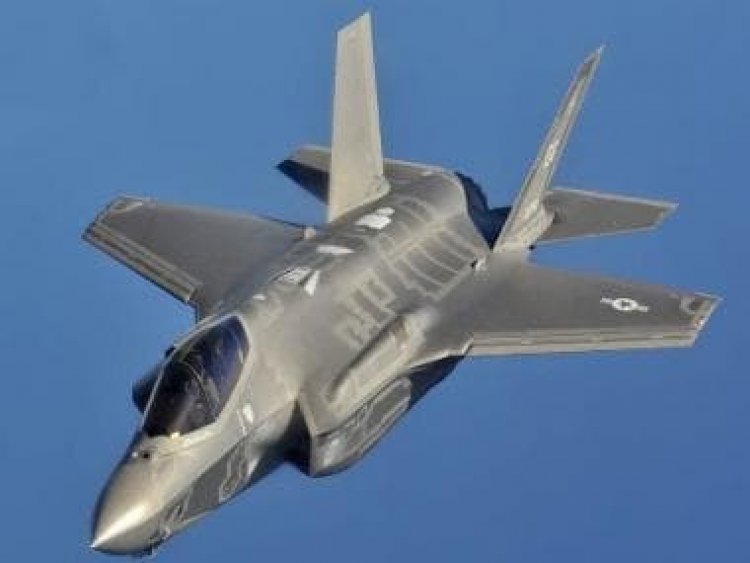
Russian General Sergei Surovikin, commander of the joint group of troops, briefed the media that they had used the Su-57 fifth-generation stealth fighters in combat in Ukraine. Only ten Su-57s have been produced till date. The first operational unit was formed in 2021. It is supposed to be a multi-role aircraft with significant air-to-air and ground attack capability. Earlier the aircraft were first reportedly used in the Syrian campaign in 2018. The news has brought into focus the capabilities and operational roles of these advanced stealth aircraft.
The Americans were the first to induct a fifth-generation aircraft, the F-22 Raptor, in 2005. They subsequently inducted three variants of F-35 Lightning II into their armed forces starting 2015. Nearly 850 of these have been built till October 2022 and delivered to 17 counties, including many NATO countries near Ukraine. China inducted the J-20 “Mighty Dragon” into service in 2017. Nearly 150 have been built, it is claimed. China’s second fifth-generation fighter Shenyang FC-31 “Gyrfalcon” did its first flight in October 2012, but is still under development. The other fifth-generation fighters under development include India’s Advanced Medium Combat Aircraft (AMCA), Russia’s Sukhoi Su-75 “Checkmate”, South Korea’s KAI KF-21 “Boramae”, and Turkey’s TAI TF-X. The Mikoyan PAK DP, also referred to as MiG-41 is a Russian programme to develop a heavy stealth fighter to replace the Mikoyan MiG-31.

Attributes of a fifth generation fighter
Most current fighters around the world are fourth-generation with multirole configurations. These aircraft manoeuvres with ‘fast transients’ involving quick changes in speed, altitude, and direction. Have high thrust-weight ratios, digital fly-by-wire (FBW) flight controls, Full Authority Digital Engine Controls (FADEC) electronically manage power plants, Active Electronically Scanned Array (AESA) radars give multi-direction tracking and fire-control ability. Wide screen cockpit displays allow better situational awareness. Composite materials like bonded aluminium honeycomb structures and graphite epoxy laminate skins help reduce aircraft weight.
A few ‘low-observable’ front-aspect stealth technologies were used in aircraft that were termed as 4.5 generation fighters. Eurofighter Typhoon, Dassault Rafale and Saab JAS 39 Gripen were in this category. The first real stealth designs were Lockheed F-117 Nighthawk attack aircraft in 1983 and the Northrop Grumman B-2 Spirit in 1989.
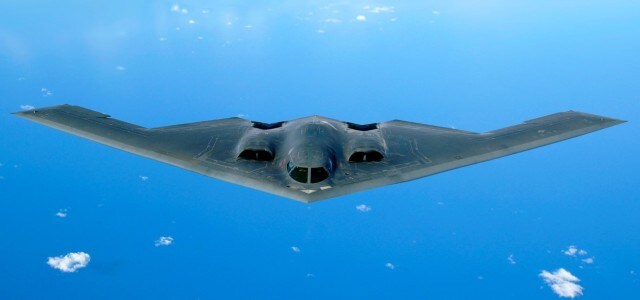
Starting with the Lockheed Martin/Boeing F-22 Raptor, fifth-generation fighters were designed from the start to operate in a network-centric combat environment, and to feature extremely low, all-aspect, multi-spectral signatures employing advanced materials and shaping techniques. The AESA radars with high-bandwidth low-probability of intercept, and IRST and other sensors are fused in for Situational Awareness (SA) and to constantly track all targets of interest around the aircraft’s 360 degree bubble. In addition to its high resistance to ECM, they could function as a “mini-AWACS”.
Integrated electronic warfare system, integrated communications, navigation, and identification (CNI), centralised ‘vehicle health monitoring’, fibre-optic data transmission, and stealth are important features. Manoeuvre performance was enhanced by thrust-vectoring. Super-cruise was inbuilt. Signature-reduction techniques include special shaping approaches, thermoplastic materials, extensive structural use of advanced composites, conformal sensors and weapons, heat-resistant coatings, low-observable wire meshes to cover intake and cooling vents, heat ablating tiles on the exhaust troughs and coating internal and external metal areas with radar-absorbent materials and paints. These aircraft are very expensive.
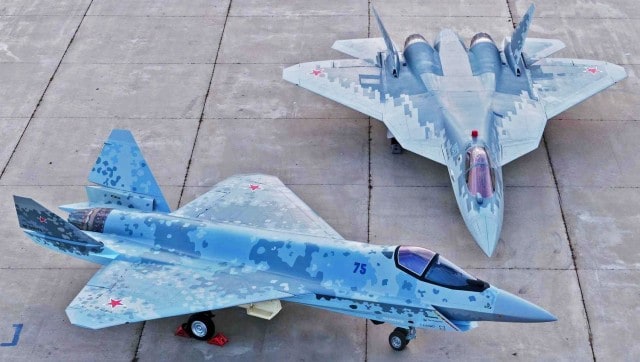
Sukhoi SU-57
Sukhoi SU-57 “Felon” is a fifth-generation fighter developed by the United Aircraft Corporation. Only 10 out of the 78 aircraft ordered have been inducted till date, and all are planned to be in by 2028.
By June 2022 Russia had reportedly deployed four Su-57s in the Ukraine conflict as a part of the tactical information network. They claim that the Felon “has shown itself brilliantly” in Ukraine, especially the on-board air-defence protection systems and the long-range precision air-to-air and ground offensive armament. The aircraft is well networked and pairs well with its “loyal wingman” the S-70 Okhotnik. The Su-57 is equipped with sophisticated sensor fusion, target detection, and communication capabilities.
However, the West has been questioning the stealth capabilities especially due to poor wing-body blending, and consider it much inferior to the Western, and even Chinese, counterparts. Though the front aspect stealth is considered sufficient for the aircraft not to be detected by the US E-3 or E-8 AWACS when heading directly towards it.
The R-37M and K-77M missiles on the Su 57 have dual pulse motors and employ active homing AESA seekers for terminal guidance, and therefore difficult to break their lock. Su-57 also has a 245 kilometres range anti-radiation missile Kh-58UShKE, and 285-kilometer-range Kh-59MK2 Stealth Cruise Missile.
In the initial months of the Ukraine war, the Su-57 was not seen. Russian sources said that they were preserving the assets for possible escalation. Russian claims of Su-57s firing missiles at Ukrainian targets at stand-off distances are difficult to substantiate, says the West.
The Sukhoi Su-75 “Checkmate” is a single-engine, stealth, and light tactical aircraft under development. The first flight is planned in 2024 and induction in 2027.
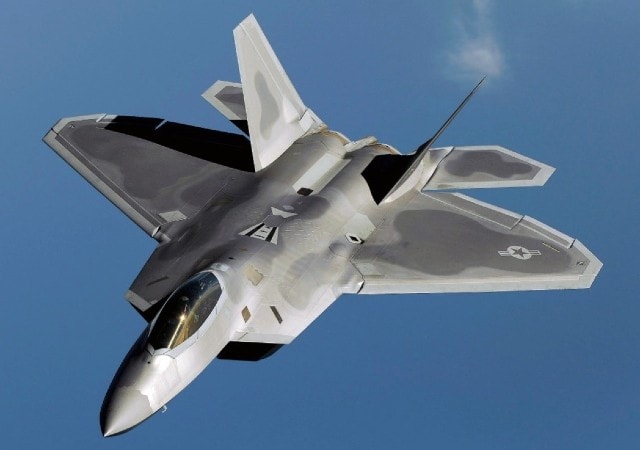
Lockheed Martin F 22 Raptor
The F-22 first flew in 1997 and formally entered service in December 2005. The US Air Force considers the F-22 a critical component of its tactical airpower. The USAF had originally planned to buy 750 aircraft but in 2009, the program was cut to 187 operational aircraft due to high costs, and low employability for counterinsurgency operations. There was a ban on its exports due to sensitive technologies. More affordable and versatile F-35 was then evolved.
F-22 fighter units were deployed at Kadena Air Base in Japan. They have done exercises in South Korea and Malaysia. In November 2007, F-22s from an airbase in Alaska intercepted two Russian Tu-95MS bombers.F-22s were deployed in the Middle East in 2007 at Al Dhafra in the UAE with Iran in mind. In March 2013, the USAF announced that an F-22 had intercepted an Iranian F-4 Phantom II that approached close to their MQ-1 Predator flying off the Iranian coastline.
F-22s performed the first combat sorties with opening strikes of Operation Inherent Resolve, the American-led intervention in Syria flying a total of 204 sorties over Syria. Few F-22s were deployed in Germany, Poland and Estonia for NATO exercises. In November 2017, F-22s bombed opium production and storage facilities in Taliban-controlled regions of Afghanistan. With cost per flight hour at $35,000, it is an expensive aircraft to operate and has been used restrictedly.
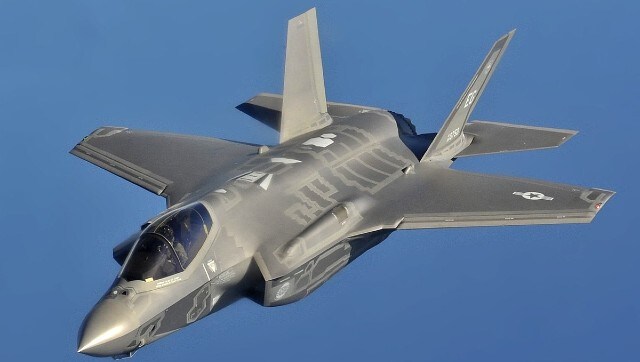
Lockheed Martin F35 Lightning II
The F-35 Lightning II is a family of single-seat, single-engine, all-weather, stealth, multirole, combat aircraft for both air superiority and strike missions. The three variants are the conventional take-off and landing (CTOL) F-35A, the short take-off and vertical-landing (STOVL) F-35B, and the carrier-based (CV/CATOBAR) F-35C. Primarily funded by the United States, some close U.S. allies, like the United Kingdom, Australia, Canada, Italy, Norway, Denmark, the Netherlands, and formerly Turkey also shared developmental funding. Several other countries placed, or are considering to place, orders.
The F-35 first flew in 2006 and entered service with the US Marine Corps F-35B in July 2015, followed by the US Air Force F-35A in August 2016 and the US Navy F-35C in February 2019. The aircraft was first used in combat in 2018 by the Israeli Air Force. The US plans to buy 2,456 F-35s through 2044 for the US Air Force, Navy, and Marine Corps. The aircraft is planned to be a cornerstone of NATO and U.S.-allied air power until 2070. The aircraft are also operated by Australia, Belgium, Denmark, Finland, Israel, Italy, Japan, Netherlands, Norway, Poland, South Korea, Singapore, Switzerland, United Arab Emirates, and the United Kingdom. Turkey’s order was later cancelled due geo-political reasons. Nearly 850 have been built till date.
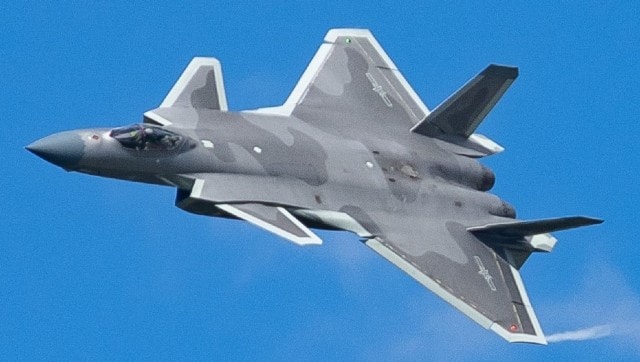
Chengdu J 20
The Chengdu J-20 “Mighty Dragon” is a twinjet all-weather stealth fighter aircraft designed as an air superiority fighter with precision strike capability. It made its maiden flight in January 2011, and was officially revealed at the 2016 China International Aviation & Aerospace Exhibition. The aircraft entered service in March 2017. The first J-20 combat unit was formed in February 2018 and thus became the world’s third operational fifth-generation aircraft after the F-22 and F-35. Over 150 have reportedly been built.
The first interim engine was the Chinese Shenyang WS-10B. Aircraft finally entered production powered by theRussian Lyulka-Saturn AL-31FM2 engine with 145 kN thrust. There are reports that J-20B has the thrust vectoring WS-10C Chinese engine with thrust of 142-147 kN with serrated afterburner nozzles for enhanced rear-aspect stealth.The final intended power-plant is the Xian WS-15, with a thrust of 180 kN that will permit super-cruise. The same is still under development.
There have also been questions about J-20s stealth. Military analysts feel that though inferior to the American fighters, its stealth is superior to that of the Russian Su-57, and is being improved further. Three operational fighter brigades are currently equipped with nearly 90 aircraft. The aircraft is nearly double the size of Rafale in volume. It can externally carry up to 11,000 kg. To remain stealth, it can carry six conformal missiles that include the Long Range PL-15 and Very Long RangePL-21 AAM.
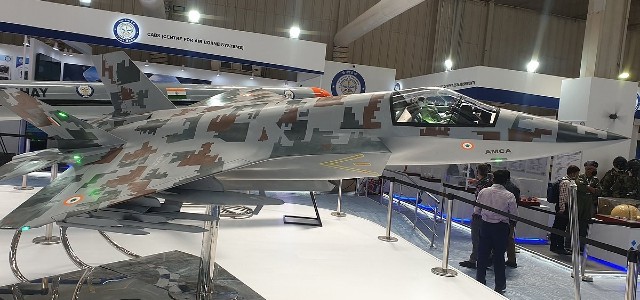
India’s AMCA
India’s fifth-generation Advanced Medium Combat Aircraft (AMCA) will be stealth, multirole, single-seat, twin-engine, air superiority fighter with ground-strike, Suppression of Enemy Air Defences (SEAD) and Electronic Warfare (EW) missions. Designed by Aeronautical Development Agency (ADA), it will be built by a public-private joint venture between ADA, Hindustan Aeronautics Limited (HAL), and an Indian private company. The development cost is estimated to be around Rs 15,000 crore (approx. $2 billion). The development of AMCA will take place in two phases, AMCA Mk-1 and AMCA Mk-2 which would majorly differ in the indigenous content and futuristic features. Mk-2 will focus more on stealth, EW, and futuristic pilot-AI interface. The AMCA Mk-2 will have DEWs and thrust-vectored engines with serrated nose pattern. Mk-2 will also incorporate sixth generation technologies. The aircraft will one day replace the Sukhoi Su-30MKI. The AMCA design is optimised for low radar cross section and super-cruise capability.Preliminary Design Review (PDR) has been completed. The Critical Design Review (CDR) is planned to be completed by the end 2022. The aircraft roll-out is planned in 2024 and the first flight in 2025. The approval from Cabinet Committee on Security (CCS) was initiated in March 2022 and the same is expected shortly. The physical metal cutting will start thereafter. Most parts of the airframe are being made in India. Some systems like aero-engine are still imported. There are some other avionics and airborne radars that are being made through joint-ventures with friendly foreign companies. The weapons are mostly being made in India. Sixth generation technologies are on drawing boards. It can be seen that India has finally come of age in its fighter aircraft manufacturing eco-system. The aircraft, along with its naval variant, is intended to provide the bulk of the manned tactical airpower of the Indian Air Force and the Indian Navy over the coming decades.

Other Fifth Generation Fighter Programmes
TAI TF-X is a Turkish fifth-generation fighter program initiated by Turkish Aerospace Industries (TAI) in 2011. Initially Sweden’s Saab AB was to provide design support services. In 2015 it was decided that the programme will be entirely indigenous. The TAI CEO TemelKotil stated that the TF-X will be unveiled in 2023, and make its first flight by 2025. The fighter is planned to enter service in 2029.
The Flygsystem 2020 (Flight System 2020) is an ongoing fifth-generation, low-observable, project by Sweden to develop the fighter jet by 2035 to replace the JAS 39 multirole fighters. There is also a proposal for Sweden to join the British BAE Systems Tempest stealth sixth-generation fighter program and integrate some technologies of the Flygsystem 2020 program.
Japan developed a prototype of a stealth jet fighter called the Mitsubishi X-2 Shinshin. The first prototype rolled out in July 2014 and the aircraft made its first flight on 22 April 2016. By July 2018, Japan had gleaned sufficient information, and decided that it would need to bring on international partners to complete this project. Japan has also signed a contract with Mitsubishi Heavy Industries to develop a sixth-generation fighter called Mitsubishi F-X.
Technology Roadmap India
Breakthrough disruptive technologies keep changing the status quo. High-bandwidth high-speed networks, Artificial Intelligence (AI), quantum computing, robotics, are going to change the way air war is fought. Keeping abreast with new technologies is important. The aerial platforms must be built around modularity that will ease regular upgrades. Smart structures and hybrid systems will dictate the future. Demand for streaming high-quality data requires bandwidth, which involves innovating sensor/processing systems. Network-centric payload processing units enable on-board data fusion prior to sending to digital links. Gallium Nitride (GaN) is a semiconductor material that is more efficient, easier to cool, and improves reliability for radars. The Passive Aero-elastic Tailored (PAT), a uniquely designed composite wing, will be lighter, more structurally efficient. It will reduce weight and conserve fuel. Hypersonic cruise, fuel cell technologies, hybrid sensors, improved human-machine interface using data analytics and biomimicry, combination of materials, apertures and radio frequencies that ensure survival in enemy territory are under development.
Things will be built faster, better and more affordably, using 3D printing yet ensuring quality and safety standards. Additive 3D manufacture creates a world with spare parts on demand, faster maintenance and repairs, more effective electronics, and customised weapons. The development of a hypersonic aircraft would forever change the ability to respond to conflict. Nano-materials will control sizes, shapes and compositions, and significantly reduce weight yet create stronger structures for air and spacecraft, and simultaneously drive down costs.
Way Ahead for India: AMCA Must Succeed
The escalating cost of modern fighters, coupled with national priorities, budgetary constraints, human-resource crunch, newer battlefield challenges, leads one to conclude that a new way of war-fighting would need to be employed, especially in the aerospace domain. Future aerial platforms will have to penetrate a dense integrated AD environment that is backed by electronic and cyber-attacks. Armed forces need to prepare for asymmetric warfare. Air forces will have to engage in system-of-systems approach to take on multi-dimension, multi-domain operations.
Undoubtedly, the “aatmanirbharta” campaign will drive indigenisation. For India to be part of the big league, the Advanced Medium Combat Aircraft (AMCA) must succeed. The aircraft needs to be developed concurrently with LCA Mk2 and must have a dedicated separate team. A “whole of nation” vision and approach will be required. Spelling out clear end-states, timelines and regular path-line reviews would be important. The time to act is now, lest it is too late.
The writer is Director General, Centre for Air Power Studies. Views expressed are personal.
Read all the Latest News, Trending News, Cricket News, Bollywood News,
India News and Entertainment News here. Follow us on Facebook, Twitter and Instagram.
What's Your Reaction?



























































